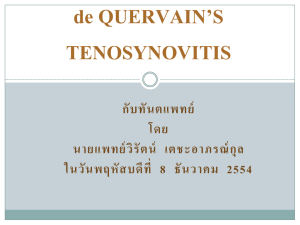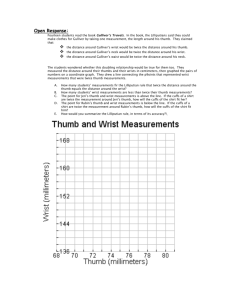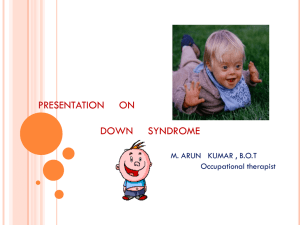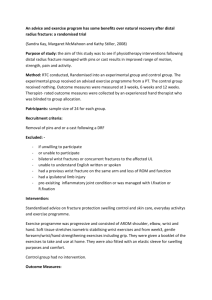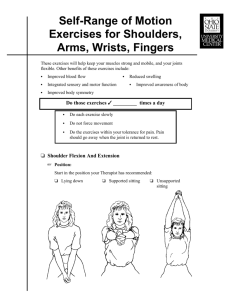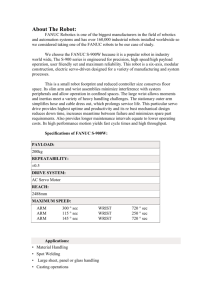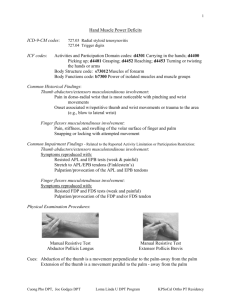Upper Extremity Passive Range of Motion Handout 1
advertisement
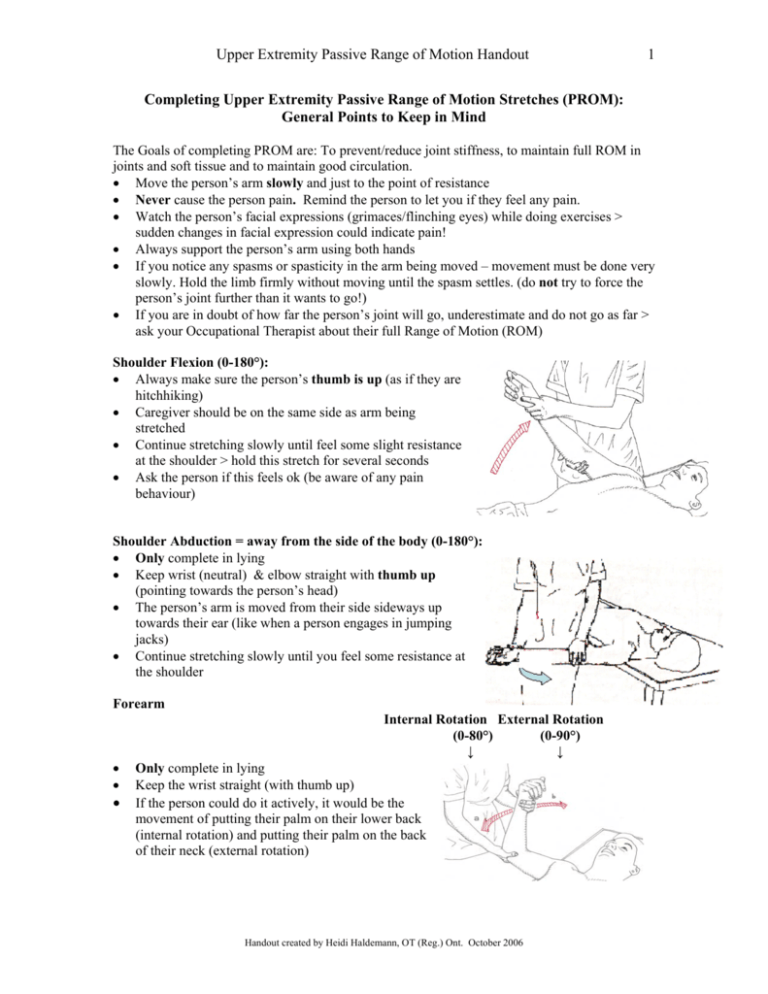
Upper Extremity Passive Range of Motion Handout 1 Completing Upper Extremity Passive Range of Motion Stretches (PROM): General Points to Keep in Mind The Goals of completing PROM are: To prevent/reduce joint stiffness, to maintain full ROM in joints and soft tissue and to maintain good circulation. • Move the person’s arm slowly and just to the point of resistance • Never cause the person pain. Remind the person to let you if they feel any pain. • Watch the person’s facial expressions (grimaces/flinching eyes) while doing exercises > sudden changes in facial expression could indicate pain! • Always support the person’s arm using both hands • If you notice any spasms or spasticity in the arm being moved – movement must be done very slowly. Hold the limb firmly without moving until the spasm settles. (do not try to force the person’s joint further than it wants to go!) • If you are in doubt of how far the person’s joint will go, underestimate and do not go as far > ask your Occupational Therapist about their full Range of Motion (ROM) Shoulder Flexion (0-180°): • Always make sure the person’s thumb is up (as if they are hitchhiking) • Caregiver should be on the same side as arm being stretched • Continue stretching slowly until feel some slight resistance at the shoulder > hold this stretch for several seconds • Ask the person if this feels ok (be aware of any pain behaviour) Shoulder Abduction = away from the side of the body (0-180°): • Only complete in lying • Keep wrist (neutral) & elbow straight with thumb up (pointing towards the person’s head) • The person’s arm is moved from their side sideways up towards their ear (like when a person engages in jumping jacks) • Continue stretching slowly until you feel some resistance at the shoulder Forearm • • • Internal Rotation External Rotation (0-80°) (0-90°) ↓ ↓ Only complete in lying Keep the wrist straight (with thumb up) If the person could do it actively, it would be the movement of putting their palm on their lower back (internal rotation) and putting their palm on the back of their neck (external rotation) Handout created by Heidi Haldemann, OT (Reg.) Ont. October 2006 Upper Extremity Passive Range of Motion Handout 2 Elbow Flexion/Extension (0-150°) • Can be completed with the person in sitting or lying • This stretch is essentially like a biceps curl (with thumb pointing out/away from the body) Supination/Pronation (0-80°) • Supination is the movement of the forearm so the palm is up > thumb pointing away from the body. Think of holding a bowl of soup with palm up • Pronation is the movement of the forearm so the palm is down > thumb pointing towards the body. • Make sure to rotate the arm from the wrist/lower arm and hold the elbow stable **In a person with ROM limitations, supination may be restricted/limited (be aware that you may only be able to move the person’s wrist to a neutral position (thumb pointing up like when giving the “thumbs up” sign) Wrist Flexion/Extension (0-80°) • Can be completed in sitting or lying • Gently bend the wrist towards the inside of the arm (flexion) and bend the wrist towards the back of the arm (extension) Repeat stretches ___ times and hold for ___ seconds. *If you have any questions or concerns, please call your Occupational Therapist at ________________ Handout created by Heidi Haldemann, OT (Reg.) Ont. October 2006


